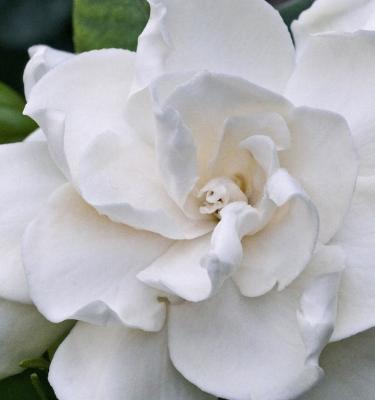

How to Grow Gardenia
Gardenias are warm climate flowering shrubs or small trees, loved for their beautifully perfumed blooms. Gardenia plants have dark green, glossy leaves year round and white or yellow heavily fragrant flowers in spring, summer and autumn.
Grow gardenias in a warm, sunny spot with protection from hot afternoon sun and frosts. They love a rich, moist soil that is slightly acidic and they’re heavy feeders - so choose a gardenia suitable fertiliser that nurtures plant growth both above and below the ground.
5 top tips for growing gardenia
- Grow gerdenias in a full sun to part shade spot, protected from hot afternoon sun and frosts.
- Gardenias need a rich, moist and slightly acidic soil to thrive
- Regular feeding with a gardenia suitable fertiliser will keep their flowers blooming and foliage green and glossy
- Gardenias will happily grow in pots, just use a gardenia suitable potting mix like Scotts Osmocote® Rose, Gardenia, Azalea & Camellia Mix and choose a pot with good drainage, but remember to water regularly as gardenias don’t like drying out.
- Remove spent flowers and tip prune in winter to encourage new bushy growth.
Essential shopping list for growing gardenia plants
- Gardenia plant
- Scotts Osmocote® Plus Organics Roses, Gardenias & Azaleas Plant Food & Soil Improver
- Scotts Osmocote® Compost Premium Soil Improver
- Garden Shovel
- If growing in pots, you’ll need Scotts Osmocote® Rose, Gardenia, Azalea & Camellia Mix and Scotts Osmocote® Controlled Release Fertiliser: Roses, Gardenias, Azaleas & Camellias and a suitable pot or container
- Defender™ Pyrethrum Insect Spray
Preparation
Gardenias need a full sun to part shade spot - depending on the variety you’ve chosen - all varieties will appreciate protection from hot afternoon sun and frosts. Gardenias prefer a moist, but free draining soil that’s slightly acidic.
Prepare the soil for planting gardenias by mixing Scotts Osmocote® Compost Premium Soil Improver and Scotts Osmocote® Plus Organics Roses, Gardenias & Azaleas Plant Food & Soil Improver through the soil in your chosen area.
Planting gardenia plants in the garden
Plant your gardenia into prepared soil - dig the hole twice as wide as the original pot and the same depth. Gently remove the gardenia from the nursery pot and tease the roots lightly if they are compact.
Plant into the hole and back fill around the plant. Water in well. Mulch around the base of gardenias to retain moisture and suppress weeds, but keep the mulch away from the main stem.
Planting gardenia plants in pots
Gardenia can be grown in large pots or planters with good drainage - choose a pot that’s at least 2 to 3 times bigger than the original nursery pot. You can always upgrade to bigger pots as your gardenia grows bigger.
Fill your pot or planter with Scotts Osmocote® Rose, Gardenia, Azalea & Camellia Mix. Gently remove the gardenia from the nursery pot and tease the roots lightly if they are compact. Plant the gardenia into the potting mix and back fill around the plant. Water in well and mulch over the surface of the potting mix to help retain moisture, but keep the mulch back from the plants main stems.
Gardenia fertiliser & gardenia care
Gardenia are hungry plants, at a minimum they will need fertilising in spring and again in autumn with Scotts Osmocote® Plus Organics Roses, Gardenias & Azaleas Plant Food & Soil Improver or if you’re growing in pots use Scotts Osmocote® Controlled Release Fertiliser: Roses, Gardenias, Azaleas & Camellias.
Yellowing or pale discoloured leaves are generally a sign your gardenia is hungry, consider another application of fertiliser and check the soil pH is slightly acidic around 5.5-6.5.
Cold weather or waterlogged soil can also discolour the leaves of gardenia - if you’re in ground gardenias are badly effected by these it’s worth growing them in a pot instead. Potted gardenias can easily be moved around for warmth or out of the rain if needed.
Dead head or remove spent gardenia flowers as they finish and if you live in a warm area you can cut back a gardenia to shape it in winter. In cooler areas lightly prune to shape after a flush of flowers in spring, summer or autumn.
Common gardenia pests and diseases
Whitefly, aphids and scale can sometime cause a problem on gardenias - spray any infestations with Defender™ Pyrethrum Insect Spray as needed.
Sooty mould is a secondary problem caused by infestations of scale or aphids. Control these pests using Defender™ Pyrethrum Insect Spray and it will prevent the sooty mould.



